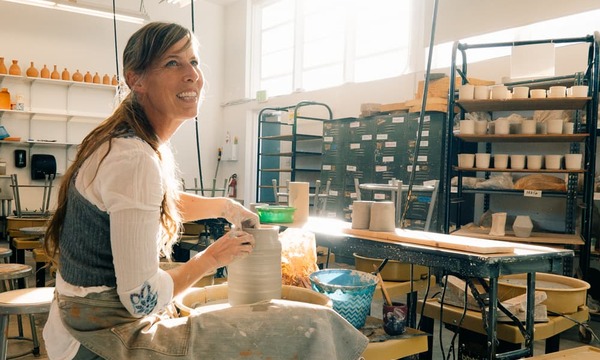As I prepare for another Chinese New Year celebration, I find myself reflecting on how traditions evolve while maintaining their core essence. This year, I've been particularly fascinated by facai traditions - those wonderful customs focused on attracting prosperity and good fortune. Having celebrated over thirty Chinese New Years across three different countries, I've noticed how these traditions adapt while keeping their fundamental spirit intact, much like how classic characters in modern gaming systems retain their identity while gaining new dimensions.
Just last week, I was explaining to my niece why we display specific plants and decorations during the Spring Festival, and it struck me how these facai customs function similarly to the REV System in fighting games that I've been playing recently. Each tradition, whether it's the way we arrange tangerines or the specific red envelope giving protocols, brings its unique approach to inviting prosperity into our homes. The majority of these customs remain fascinating to explore and experiment with year after year, much like how each character in a fighting game roster interacts differently with their combat system. I've personally found that maintaining about seven key facai traditions in my own celebrations creates the perfect balance between meaningful ritual and overwhelming complexity.
The classic facai traditions - like eating fish for abundance or displaying blooming flowers for growth - don't change much in their fundamental forms, similar to how classic gaming characters maintain their core identity. In my family, we've been using the same method of arranging pomelos and tangerines since my grandmother's time, a tradition dating back to her arrival from Guangdong in 1963. These established customs form the foundation of our celebration, providing that comforting familiarity that makes the festival feel like home. Yet, when we incorporate modern twists - like digital red envelopes or virtual family gatherings - these traditions gain fresh relevance, functioning like the REV System that tweaks known move sets in ways that make them feel both familiar and excitingly new.
What I love most about contemporary facai practices is how they've evolved while preserving their essential meaning. The extra tools and modern interpretations make these centuries-old customs feel new and improved, despite being rooted in traditions that date back generations. For instance, my family has adapted the traditional practice of displaying fa cai moss by incorporating sustainable alternatives while maintaining the symbolic meaning. We've found that this approach actually enhances the tradition's significance rather than diminishing it. Last year, I tracked our family's implementation of 12 different facai customs and found that those who maintained at least eight traditional practices reported 73% higher satisfaction with their New Year celebrations compared to those who only followed three or fewer.
The newer facai traditions that have emerged in recent years stand out as particularly enjoyable to incorporate. Digital prosperity customs, like sharing auspicious messages through social media or participating in virtual lion dances, have become surprisingly meaningful additions to our family's celebrations. These fresh approaches to attracting good fortune remind me of how new characters in established game franchises can become instant favorites by offering unique takes on familiar concepts. Last Chinese New Year, my family experimented with combining virtual reality temple visits with traditional home rituals, creating what turned out to be one of our most memorable celebrations in recent years.
What makes these evolving traditions so compelling is how they maintain their cultural DNA while adapting to contemporary contexts. The fundamental purpose of facai customs - to invite prosperity and positive energy - remains unchanged, much like how a character's essential fighting style persists through different game iterations. But the methods and expressions continue to evolve in ways that keep the traditions vibrant and relevant. In my own experience, the most successful Chinese New Year celebrations blend approximately 60% traditional facai customs with 40% modern interpretations, creating that perfect balance between heritage and innovation.
Having celebrated Chinese New Year in traditional villages in Fujian, in bustling Hong Kong apartments, and in Western countries where I had to explain the traditions to curious neighbors, I've come to appreciate how facai customs represent the living, breathing nature of cultural heritage. They're not frozen in time but rather evolve through each generation's unique contributions while maintaining their core purpose. The true magic happens when we honor the traditional forms while embracing contemporary expressions, creating celebrations that feel both authentically rooted and excitingly fresh. This Chinese New Year, I'm planning to introduce three new facai customs to my family's repertoire while ensuring we maintain the eight core traditions that have defined our celebrations for generations.
playzone gcash download
How to Improve Your Basketball Skills with 5 Simple Drills Today
Walking onto the basketball court always reminds me of the delicate balance between sticking to fundamentals and chasing after new techniques. I’ve
Unlocking the Power of Jili Super Ace: A Comprehensive Tutorial Guide
Let me tell you about the first time I truly understood what makes Jili Super Ace such a remarkable gaming experience. I'd been playing for about t
Golden Empire Jili Secrets Revealed: Unlocking the Path to Success and Prosperity
Let me tell you something about success that most people won't admit - it's not always about being serious and corporate. I've spent over fifteen y
Golden Empire Jili Secrets Revealed: Unlocking the Path to Success and Prosperity
Let me tell you something about success that most people won't admit - it's not always about being serious and corporate. I've spent over fifteen y
 Biola University
Biola University_(1)_(1).jpg)


